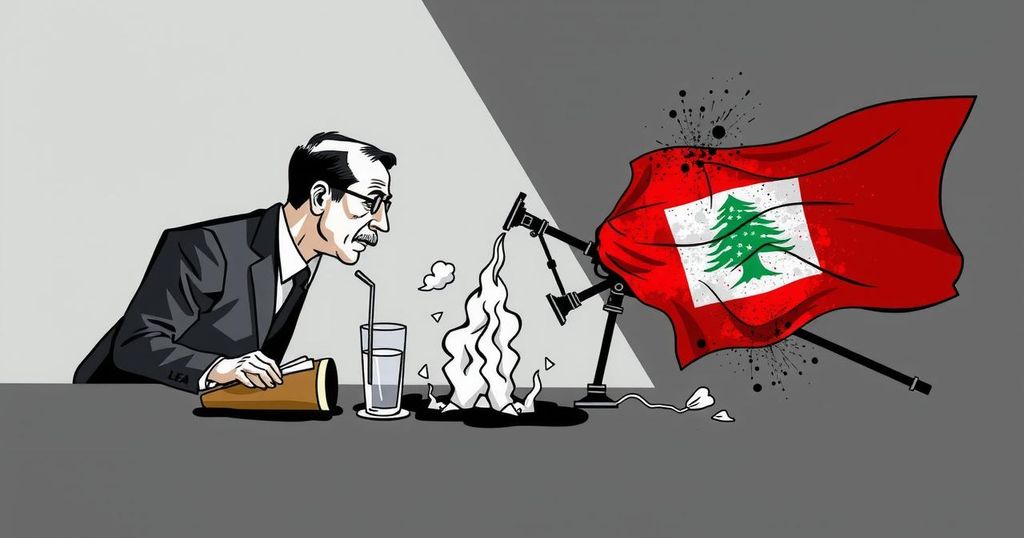Israel and Lebanon Approaching Ceasefire Agreement Amid Ongoing Conflict

Israel and Lebanon are close to finalizing a ceasefire deal, proposing a 60-day truce with troop withdrawals and the reconstitution of military control in southern Lebanon. The ceasefire negotiations are complicated by ongoing military exchanges and domestic political opposition in Israel, raising concerns about its enforcement and humanitarian implications.
Israel and Lebanon are reportedly on the verge of finalizing a ceasefire agreement, with discussions set to take place in the Israeli cabinet on Tuesday. The proposed deal aims to establish a 60-day truce to halt hostilities between Israel and Hezbollah, the Iranian-supported Lebanese militia. Key elements of the agreement include the withdrawal of Israeli troops from southern Lebanon and a withdrawal of Hezbollah forces from the region, facilitating the deployment of the Lebanese army in their place.
Despite the ongoing military exchanges, including the firing of approximately 250 projectiles into Israel from Lebanon last Sunday, optimism has emerged regarding the potential ceasefire. The US envoy to the region, Amos Hochstein, has been involved in negotiations, making it clear that a timeline for the ceasefire was necessary amid the ongoing hostilities. Lebanese officials have indicated that the only remaining barrier was determining the monitoring arrangements for the truce, which they assert has been resolved with the formation of a five-country monitoring committee led by the United States.
However, a significant challenge arises from the internal political landscape in Israel, particularly the opposition from National Security Minister Itamar Ben Gvir, who has labeled a ceasefire as a “grave mistake.” He argues that Hezbollah is currently diminished militarily and perceives an opportunity to eradicate the group entirely. Meanwhile, Lebanese officials insist that any ceasefire must adhere to UN Security Council Resolution 1701, which concluded the 2006 conflict between Israel and Hezbollah.
The delicate situation continues to evolve, with significant consequences on both sides. Since the escalation of violence in late September, more than 3,750 people have been reported killed in Lebanon, while over one million have been displaced within the country. The humanitarian impact of the conflict has raised urgent concerns and demands for a sustainable resolution to prevent further loss of life and displacement in the region.
The ongoing conflict between Israel and Hezbollah, a militant group based in Lebanon and supported by Iran, has escalated significantly since late September. Following various military exchanges, both sides are now negotiating a ceasefire that aims to bring stability to the region. The proposed agreement includes provisions for the withdrawal of military forces and the reallocation of control in southern Lebanon. Historically, the dynamics between Israel and Hezbollah have been shaped by previous conflicts, including the 2006 war and ongoing border tensions, particularly concerning each party’s military presence and actions in the region. In this context, the humanitarian consequences of the conflict have become increasingly pronounced, prompting calls for intervention and resolution.
In conclusion, Israel and Lebanon appear to be nearing a ceasefire agreement following weeks of intensified conflict, indicating a potential shift towards stabilization in the region. The negotiations revolve around key aspects such as troop withdrawals and the monitoring of the ceasefire, with both sides expressing cautious optimism amid ongoing hostilities. However, challenges remain, particularly regarding political opposition within Israel and the complexities of enforcing the truce. The humanitarian crisis resulting from the violence further underscores the pressing need for a resolution to restore peace and security to the affected populations.
Original Source: www.bbc.co.uk







